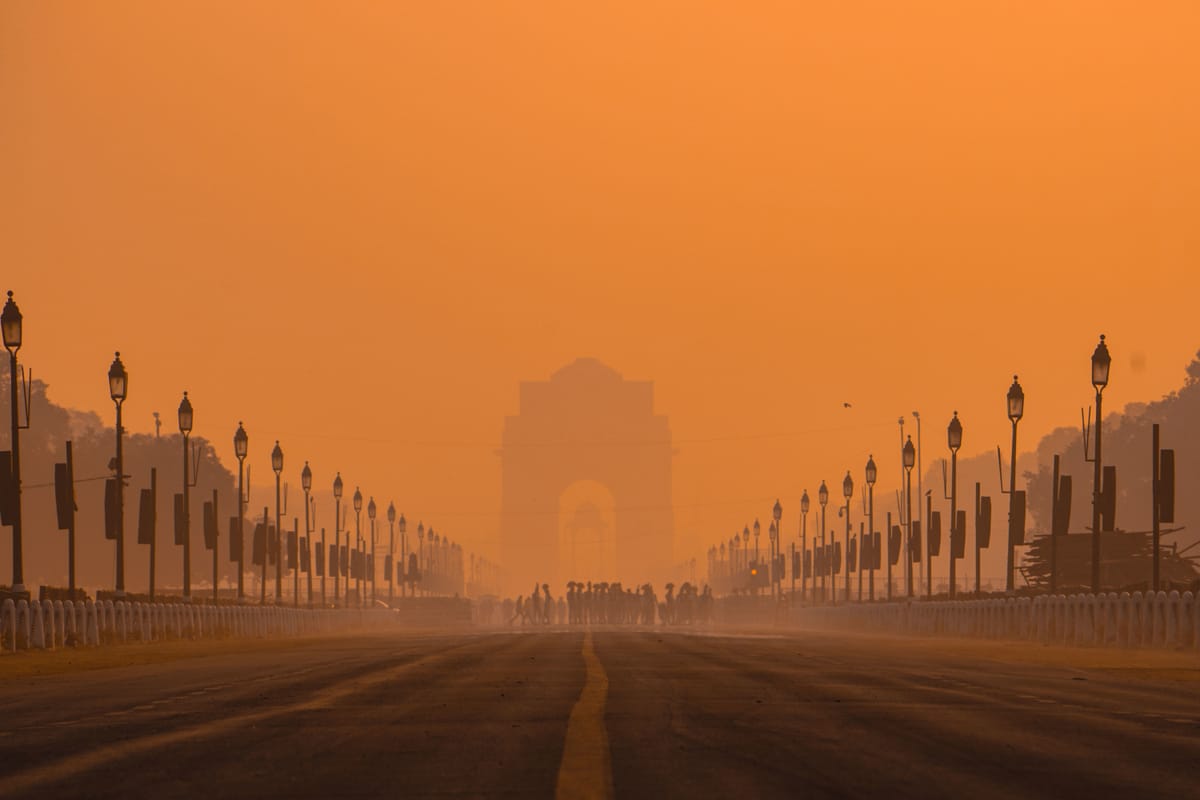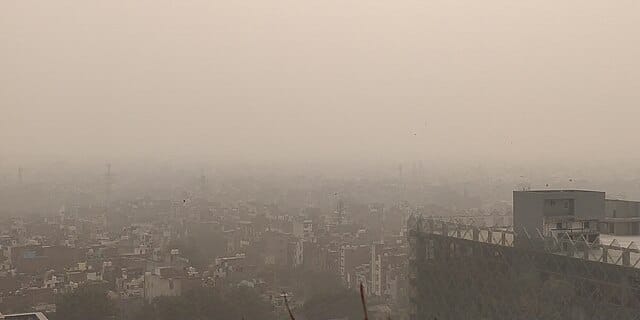

The Air Quality Index across several micro-geographies in the National Capital Region has soared significantly post diwali celebrations yesterday. With the AQI surpassing the mark of 350 – a level considered “severe” and dangerous to breathe, according to the World Health Organisation (WHO), public health concerns in the capital have resurfaced. In four air quality monitoring stations of Delhi, namely, Dwarka, Ashok Vihar, Wazipur and Aanand Vihar, the AQI touched the mark of 400 as reported by SAMEER, an app developed by the Central Pollution Control Board (CPCB). In addition to the deteriorating air quality, visibility has also suffered a toll with grey haze veneering the city. The air quality is expected to slip into the 'severe' category more widely on Wednesday.

Lenient Stance of SC on Firecrackers
It is worth mentioning that the Supreme Court last week lifted a ban on firecrackers across New Delhi during Diwali, permitting some use of "green firecrackers" that produce lower emissions. These firecrackers have been developed by the federal research centres and are meant to reduce particulate and gas emissions by an estimated 30%. The court had instructed that these should be used only at particular hours from Saturday through Tuesday, but as in previous years, the regulation was generally disregarded. Health experts have forewarned about the looming respiratory hazards that can take chronic shape upon long-term exposure, especially for vulnerable demographics like pregnant women and young children.
Negative Effects on Pregnant Women and Young Children
"Children's organs are delicate, and anything that affects delicate organs is more harmful. Pollution is detrimental to those suffering from asthma or other respiratory problems. If a normal person breathes in highly polluted air, changes occur in their lungs that can lead to pollution-induced asthma. Pollution not only affects pregnant women but also their children. The biggest problem is vehicular pollution," Dr. Gupta added. (ANI)
#WATCH | Delhi | Dr Dhiren Gupta, Co Director, Paediatric Pulmonologist, Sir Gangaram Hospital, says, "Children's organs are delicate, and anything that affects delicate organs is more harmful... Pollution is detrimental to those suffering from asthma or other respiratory… pic.twitter.com/rPqKJmXDgC
— ANI (@ANI) October 21, 2025
Authorities continue to advise individuals to limit outdoor activities, wear a mask and monitor vulnerable groups closely. Officials also emphasise the need for long-term reductions in traffic-related emissions and call for stringent measures to reinforce the overall pollution control framework to minimise future health exigencies.
Political Blame Game over Delhi Pollution
In an interesting turn of events amidst the burgeoning concerns, an attempt to politicise the impending crisis has been witnessed in the national capital, with murky exchanges between the BJP and the AAP, as the Delhi Government claims that stubble burning in Punjab is the cause of the low AQI, while the AAP counters that the BJP is hiding air quality data.
Delhi AAP President Saurabh Bharadwaj launched a scathing allegation at the Delhi government of betraying the aspirations of Delhiites by capturing their imagination with false promises of conducting artificial rain.
"The government is lying. It said that we would fix pollution, after Diwali, by making artificial rain. Did we get artificial rain? No. I ask you, if we could have done it, why didn't you? Do you want people to be sick?" Bharadwaj remarked while speaking to ANI. Posting a video on his official 'x' handle, where he is seen holding an air quality monitoring device, which seems to provide an AQI measurement of 999, he further accused the government of concealing the actual AQI data in fear of wider public outrage.
AQI 999 से भी ज़्यादा
— Saurabh Bharadwaj (@Saurabh_MLAgk) October 21, 2025
सरकार AQI का डाटा छुपा रही है, मगर लोगों के अपने पॉल्यूशन मॉनिटरिंग डिवाइस सच दिखा रहा है ।
किसी ने ये वीडियो भेजा है। सवाल है सरकार क्यों चाहती है कि लोग बीमार पड़ें ? pic.twitter.com/YsiIrUkESB
